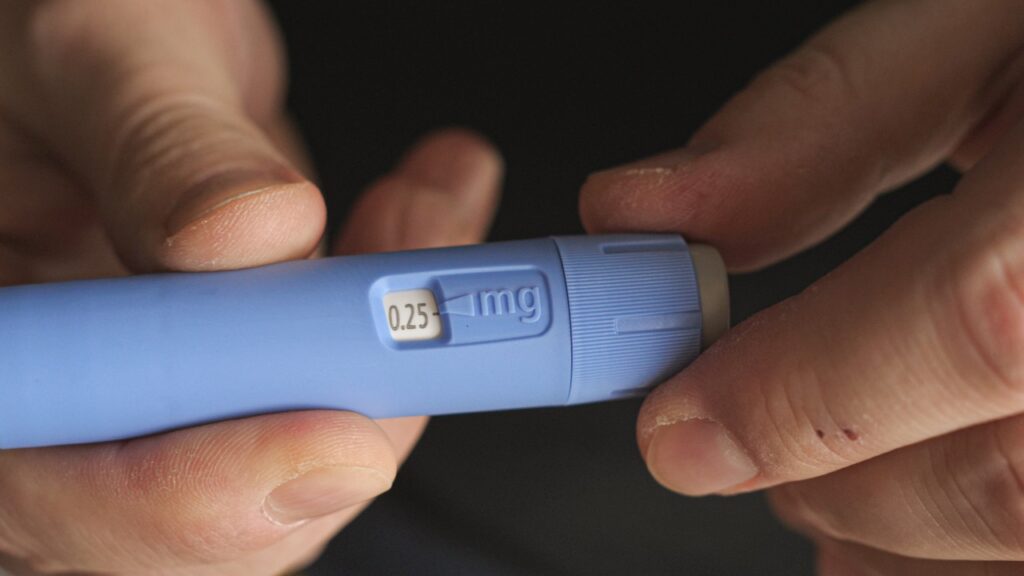Oral vs. Injectable Semaglutide: A Comprehensive Guide
If you’re contemplating the use of semaglutide, you’re likely puzzled about whether to opt for the oral or injectable form. This article aims to provide a thorough review, covering everything from what semaglutide is to its different formulations, benefits, and potential side effects.
Table of Contents
- Understanding Semaglutide
- When is Semaglutide Prescribed?
- Oral Semaglutide: What You Need to Know
- Injectable Semaglutide: The Basics
- Comparing Oral and Injectable Semaglutide
- Types of Semaglutide Formulations
- Benefits of Semaglutide
- Clinical Trials and Their Outcomes
- Risks and Side Effects
- Preference for Injectable Semaglutide
- Transitioning Between Forms
- Key Takeaways
- FAQs
Understanding Semaglutide
Semaglutide, marketed under brand names like Ozempic and Rybelsus, is a medication Unlike sodium-glucose co-transporter inhibitors, semaglutide works by mimicking GLP-1 hormones. Approved globally, including in the U.S., Europe, and Canada, it mimics the glucagon-like peptide-1 (GLP-1) receptor agonists. Semaglutide is part of a class of drugs that also includes comparators like liraglutide, dulaglutide, and exenatide.
When is Semaglutide Prescribed?
Semaglutide is often recommended when other therapies for type 2 diabetes or weight management have failed. According to the American Diabetes Association, it’s usually prescribed in combination with metformin. However, it’s not to be used as an add-on to other antihyperglycemic drugs.
For patients having type-2 diabetes, semaglutide is often recommended when other forms of treatment are regarded as ineffective and other therapies are necessary. For instance, in the administration criteria of Canadian Drug Expert Committee for semaglutide in patients having type-2 diabetes, it states that the medication should only be prescribed, in combination with MET or Metformin alone, when exercise and diet along with maximal tolerated dose of MET is not able to achieve optimal glycemic control.
It is also crucial to understand that this medication should not be used as an add-on therapy to MET.
Commencing the intake of Semaglutide for type-2 diabetes should not be taken lightly. On the other hand, it should be discussed comprehensively with the health provider to make sure that you are practicing ample safety and well-being while also requiring careful monitoring by experienced health professionals.
With respect to the prescription of semaglutide for ensuring weight management, Health Canada has given approval to the 2.4 mg of injection to serve as a measure to be implemented in addition to a reduced calorie diet and increased activity to manage weight in patients having:
- A BMI of 30 kg/m2 or higher (obesity)
- A BMI of 27 kg/m2 or higher (overweight)
In addition to this, it is also expected that the patient should suffer from chronic weight-related issues, like dyslipidemia, hypertension, or obstructive sleep apnea.
In case someone is suffering from chronic weight-related issues and meeting the given criteria, then a semaglutide prescription can be laid out to offer assistance with weight management.
It is crucial to understand that there are several contraindications with respect to semaglutide, implying that it is not always possible to obtain a prescription due to some other health complications, or possible reactions with a specific medication you might be having.
It is recommended to consult your healthcare provider before you make any decision regarding a medication like Semaglutide.
Oral Semaglutide: What You Need to Know
Oral semaglutide is administered as a pill and comes with specific guidelines. For instance, it should be taken with a small amount of water and not crushed or chewed. It’s absorbed differently in the body, which is why some people prefer injectable semaglutide.
The administration of oral medication serves to be quite a simple procedure. Still, you are expected to follow specific guidelines when you are taking Semaglutide orally. Some of the common instructions are:
- Take the medication with a sip of plain water. Avoid taking with any other beverage.
- Swallow the entire tablet in one go. Avoid chewing or crushing the tablet.
- Wait for around 30 minutes after you take the tablet before eating or drinking anything else than plain water.
- For optimal results, aim at eating something 30-60 minutes after you take the medicine.
- Take all doses in the similar fashion.
The dosage ultimately depends on your current condition and how well you are responding to the medication. Still, there are higher chances that you will only need one medicine per day.
Injectable Semaglutide: The Basics
The injectable form is often considered more convenient. It’s administered subcutaneously, usually once a week, and doesn’t require strict timing around meals. This form is often compared to other injectable medications like insulin glargine and empagliflozin in studies.
You are not expected to pay ample attention to when you should have the injection with respect to meals. It can be made possible any time of the day. The only thing you need to consider with respect to Semaglutide injection is where on the body you need to administer it and what day of the week you are administering the same.
Comparing Oral and Injectable Semaglutide
Both forms have shown similar efficacy in clinical trials. However, a meta-analysis of studies indicates that patient tolerability and preference often lean towards the injectable form due to its less frequent dosing schedule.
There is speculation that the semaglutide injection serves to be more effective than semaglutide oral. Still, studies depict that oral semaglutide is less inferior to subcutaneous semaglutide. This implies that the two forms of semaglutide work in the same manner. Ultimately, it is all about your preference.
Types of Semaglutide Formulations
Semaglutide comes in various doses, both in injectable and oral forms. The injectable form is often started at a lower dose and gradually increased, while the oral form starts at 3 mg and can go up to 14 mg.
Injectable Formulation
Semaglutide’s injectable formulation serves to be a colorless solution available in pre-filled, single-use pens. The formulations can vary. Single-use, pre-filled pens contain doses of:
- 0.25 mg per pen
- 0.5 mg per pen
- 1 mg per pen
- 1.7 mg per pen
- 2.4 mg per pen
Pre-filled, multi-use pens contain the doses of:
- 1 mg per pen
- 2 mg per pen
- 4 mg per pen
- 6.8 mg per pen
- 9.6 mg per pen
The inactive ingredients include:
- Sodium chloride (8.25 mg)
- Disodium phosphate dihydrate (1.42 mg)
- Water for injection
In addition to these, sodium hydroxide or hydrochloric acid can also be added as per the requirement to adjust pH.
On the other hand, Ozempic pens contain the following dosages:
- 0.25 mg
- 0.5 mg
- 1 mg
- 2 mg
All doses of semaglutide typically start at the lowest dose. Eventually, it was increased to the maintenance dose at 4 weeks. It is the dose you will be during the treatment’s duration. If it is not enough, you can be moved to a higher dose.
All injectable forms of semaglutide require careful regulation of dosage with the medical team.
Oral Formulation
The oral formulation consists of the following doses:
- 3 mg
- 7 mg
- 14 mg
You will observe that these doses are significantly higher than that of semaglutide injection. When you are prescribed semaglutide oral, chances are that your team will recommend taking around 3 mg daily for around 30 days and then increasing the same to 7 mg.
Some of the active ingredients of Semaglutide are:
- Povidone
- Magnesium stearate
- SNAC or Salcaprozate Sodium
- Microcrystalline Cellulose
Benefits of Semaglutide
Semaglutide has shown promising results in both weight management and glycemic control. Clinical trials have indicated significant reductions in HbA1c levels and body weight, making it a valuable addition to diabetes therapies.
Weight Loss
Semaglutide offers assistance with effective weight management in the manner medication mimics GLP -1 for suppressing appetite.
As per a study in 2022, 408 patients having a BMI of 27 or more were given weekly semaglutide injections for around 3 months. During the clinical trial, it was observed that by the time of 3 months, the trial group’s mean weight loss was around 6.7 kg. By the time of 6 months, the weight loss was around 12.3 kg.
Reduction in HbA1c Levels
HbA1c is also known as Glycated Haemoglobin. It is created when the glucose in your body sticks to RBCs. The given buildup results in increased sugar content in the blood. It is a major concern with those having type 2 diabetes.
A study in 2020 suggests that administering only 0.5 mg to 1.0 mg of semaglutide on a weekly basis can help in reducing HbA1c levels significantly.
Better Glycemic Control
Another crucial issue with patients having type 2 diabetes is glycemic control. Thankfully, it has been observed that semaglutide is also useful in ensuring glycemic control.
In a 2020 study, it was observed that weekly intake of around 0.5 mg to 1.0 mg of semaglutide resulted in major improvement in glycemic control.
Clinical Trials and Their Outcomes
Various studies have been conducted to assess the efficacy and safety of semaglutide. In some studies, semaglutide was compared to a placebo to evaluate its effectiveness. These trials have included different patient classes and comparators, and the results have generally shown positive outcomes in terms of both glycemic control and weight management.
Japanese Patients Study
In a 2022 study involving Japanese patients with type 2 diabetes, the effectiveness and safety of oral semaglutide were examined. The study included 701 patients who were administered either varying doses of oral semaglutide or a placebo over a span of 52 weeks, followed by a 5-week observation period. Contrary to prior beliefs that
semaglutide might yield different outcomes in Japanese patients, the study found no such discrepancies.
The results indicated a notable difference in HbA1c reduction and weight changes in patients who took semaglutide compared to those on the placebo. The overarching conclusion was that oral semaglutide is beneficial for a diverse range of Japanese patients with type-2 diabetes, and no unforeseen safety issues were identified.
Weight Gain Study
Another 2022 study addressed concerns about potential weight gain after discontinuing semaglutide. This research focused on tracking the weight changes in 327 adults after they stopped their regular weekly dose of 2.4 mg subcutaneous semaglutide. A year after halting the medication, it was observed that the patients regained approximately two-thirds of the weight they had initially lost while on semaglutide. However, it’s essential to note that even with this weight regain, the patients still weighed less than their initial weight before starting the medication. The study emphasized the chronic nature of obesity and the necessity for sustained treatment to prevent weight regain.
Reduction in Body Weight and HbA1c Levels
Lastly, a 2021 study delved into the impact of oral semaglutide on body weight and HbA1c levels. In this research, 2,836 patients were given a 14 mg dose of oral semaglutide to observe its effects on their weight and HbA1c levels. The findings corroborated that oral semaglutide effectively reduces HbA1c levels and body weight, regardless of any other medications the patients might be on. This study further reinforced previous research and meta-analyses on the topic, underscoring the efficacy of semaglutide in managing HbA1c levels and weight.
Risks and Side Effects
Like all medications, semaglutide comes with its own set of risks and side effects, including gastrointestinal issues like nausea and more severe complications like hypoglycemia. Always consult your healthcare team for a comprehensive review of these risks.
Gastrointestinal Side Effects
Semaglutide can cause gastrointestinal side effects, including:
- Nausea
- Vomiting
- Loss of appetite
- Constipation
- Diarrhea
- Abdominal pain.
Some of the severe side effects include:
- Risk of thyroid cancer
- Hypoglycemia
- Gallbladder issues
- Pancreatitis
- Allergic reactions
Preference for Injectable Semaglutide
Many patients prefer the injectable form due to its convenience and less frequent dosing. However, those with a needle phobia or other specific issues may opt for the oral form.
Oral semaglutide is often reserved exclusively for patients who:
- Have an aversion to of phobia of needles
- Cannot physically tolerate injections
- Are unable to self administer and have no carer to aid them.
Transitioning Between Forms
Switching between oral and injectable forms should be done under strict medical supervision. Dosage adjustments are often required, and your healthcare team will monitor for any complications or side effects.
Key Takeaways
Semaglutide offers a versatile treatment option. Whether you choose the oral or injectable form will depend on your specific needs, lifestyle, and medical advice.
Going from 14 mg of oral semaglutide to its comparable dose of 0.5 mg weekly after switching to subcutaneous semaglutide is a big leap, and you will need to be monitored when doing so.
FAQs
Can oral semaglutide replace insulin therapy?**
No, it’s generally used as an add-on treatment.
Are there dietary restrictions with semaglutide?
No specific restrictions, but a balanced diet is recommended for optimal results. If you wish to minimize gastrointestinal side effects, it is recommended to avoid consuming fatty foods while being hydrated throughout.
How do oral and injectable forms compare in long-term use?
Studies show similar efficacy, but patient preference often leans towards the injectable form. One of the primary aspects to consider while analyzing semaglutide injectable vs. oral is the method of administering it.






